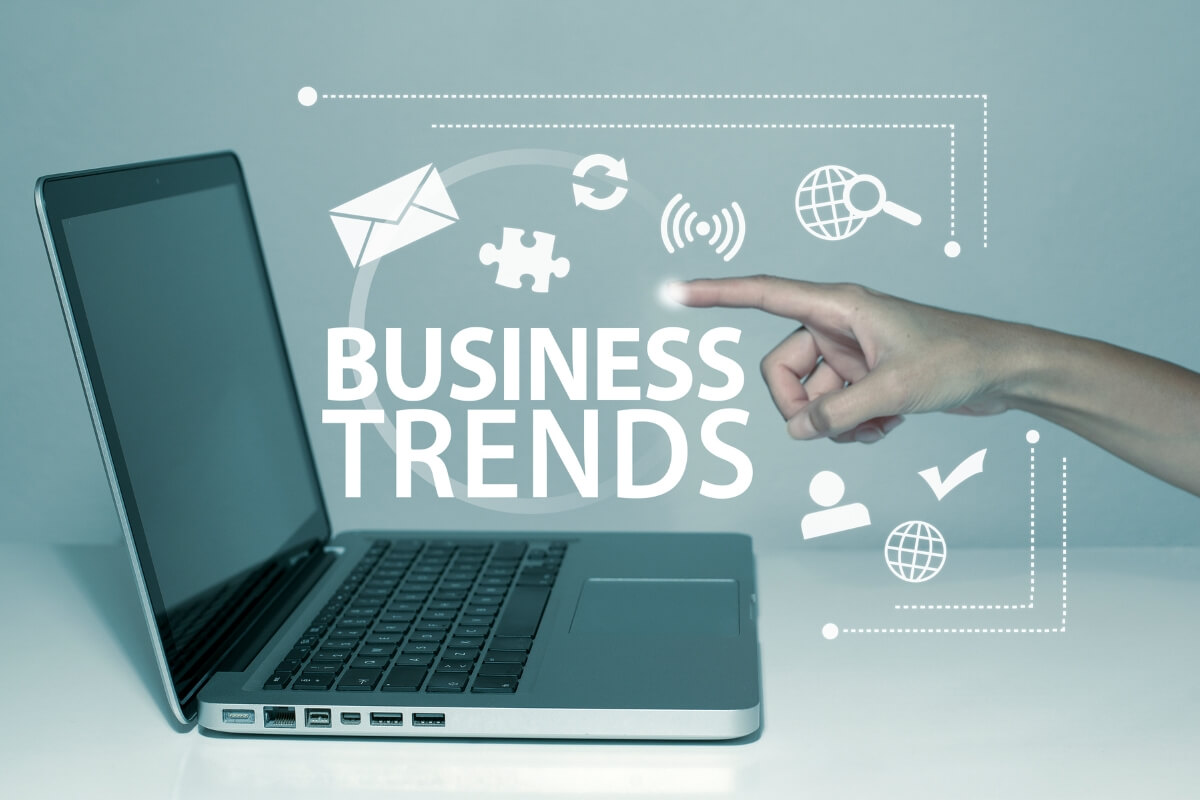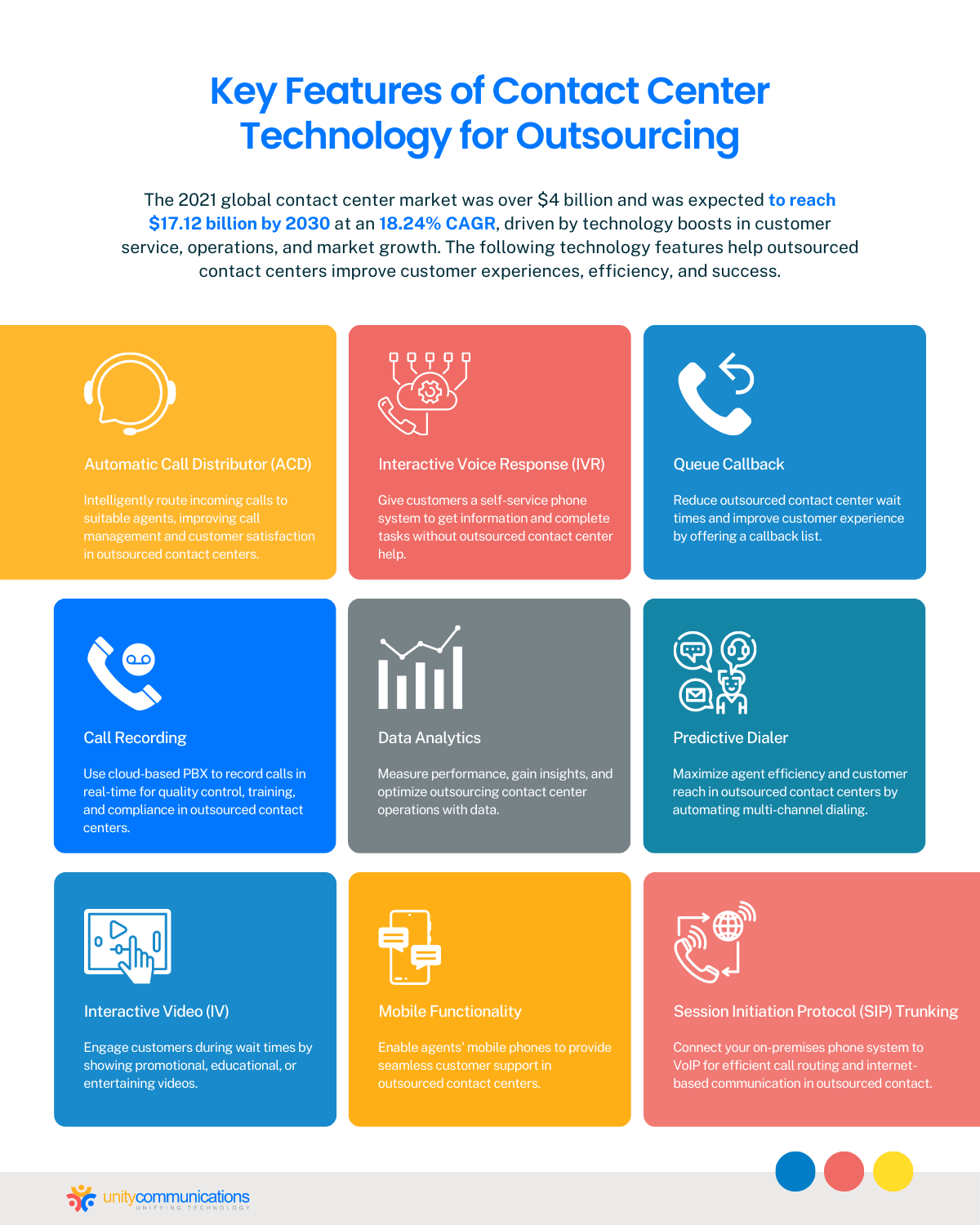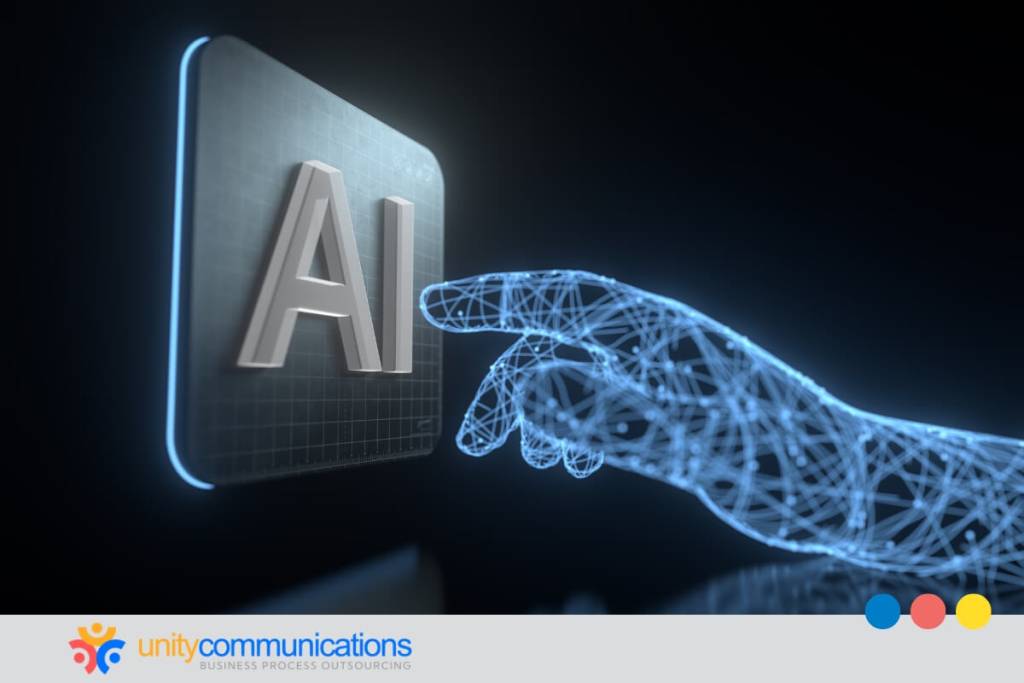Table of Contents
Poor customer interaction leads to complaints and revenue loss. You need solid customer contact to succeed. That’s where contact center technologies come in. Think computer telephony integration (CTI) and customer relationship management (CRM) software.
How we interact with customers has changed. What started as call centers evolved into contact centers. There’s now even a contact center as a service (CCaaS). Customer care now involves multiple channels and more solutions.
Keeping up with the ever-changing contact center industry is tough. Understanding contact center technology and its trends will help.
Let’s dive in.
Contact Center Technology Overview

Contact center technology refers to the hardware and software used to define a customer’s journey. Such technology ensures that customers can use various channels to reach you.
Technological resources help optimize contact center operations to improve customer service. In addition to offering multiple communication channels, they have many valuable features designed to enhance the customer experience.
But contact center technologies provide several other benefits, such as:
- Improving service efficiency
- Ensuring service quality
- Achieving customer satisfaction
- Increasing productivity
- Boosting profitability
- Reducing operating costs
- Scaling a business
Hence, it makes sense for companies to leverage technologies for their contact centers.
Phone Systems for Contact Centers
According to Zendesk, over 60% of customers reach customer service through phone calls. Email and live chat come next. Thus, phones are still customers’ most preferred communication channel.
There are three basic types of business phone systems:
- Traditional on-premises private branch exchange (PBX)
- VoIP PBX
- Hosted VoIP
Here’s how a contact center uses a phone system:
- Private branch exchange: A PBX uses many telephones under the same network. In the past, companies deployed and installed such systems on-site. Today, however, they upgraded to a virtual PBX instead of an on-premises one.
- Voice over internet protocol: VoIP has become the standard business phone system. It enables employees to use desk phones to communicate with customers. It even lets them download an app on their mobile phones to assist customers, no matter where they are.
Contact Center Tools and Technologies
According to Hiver, 60% of companies offer more than three channels for customer support:
- Phones (83%)
- Email (77%)
- Chat (42%)
- Social media (31%)
- Self-service (25%)
- Support forums (16%)
A contact center usually incorporates all these channels into a unified platform. It also integrates various tools for workforce empowerment and robust customer contact. Here are some contact center technologies and tools:
- Computer telephony integration. CTI enables computers to work with phones. It has advanced features such as automated dialing, screen pops, and caller authentication. It also allows incoming and outgoing calls. It has call recording, monitoring, data analytics, and reporting.
- Customer relationship management. CRM allows companies to record customer data via a centralized platform. This tool lets you store, sort, and manage customer interactions in a contact center.
- Workforce management software. WFM helps workforce analysts record, track, and report customer interactions. It assists in staff forecasting, scheduling, and even hiring new employees.
- Campaign management system. CMS is ideal for sales and telemarketing. It provides agents with a contact list and customer information for outbound calls.
- Email response management. This software acknowledges, analyzes, and sorts emails received from customers. It routes those emails to the appropriate agents for proper handling.
- Web chat platform. This real-time system allows customer interaction via a web interface. It even lets chat support specialists handle multiple sessions and assist various customers.
- Social media. These channels allow businesses to communicate and engage with customers. Companies send automated answers to frequently asked questions (FAQs) on Facebook Messenger.
Key Features of Contact Center Technology
The 2023 Customer Contact Week (CCW) market study highlights that digital transformation remains a top priority. Equally crucial is the balance between digital and voice interactions, combining automated solutions with human agent support. Consequently, businesses are enhancing their digital communication channels and simultaneously equipping their agents with advanced technological tools.
Anticipate significant advancements and changes in contact center technologies. Here are some of their sophisticated features:
- Automatic call distributor (ACD). This system boasts an intelligent call-routing capability, directing incoming calls to the most appropriate and available agents.
- Interactive voice response (IVR). It is an automated telephonic system offering self-service options, allowing callers to obtain necessary information without the need for live agent interaction.
- Queue callback. True to its name, this feature queues customers and calls them back once an agent becomes available, effectively saving customers time.
- Call recording. Modern contact centers are adopting cloud-based PBX systems for recording customer calls, offering capabilities for both real-time and asynchronous call monitoring.
- Data analytics. This technology is essential for measuring business performance. It involves collecting and analyzing data, aiding in performance assessment, forecasting, business reporting, and decision-making processes.
- Predictive dialer. This tool automatically dials from a list of contacts and is applicable across various communication channels, including mobile, text, chat, email, and social media.
- Interactive video (IV). Widely integrated in contact centers, IV technology allows businesses to display promotional, entertaining, or educational videos. These videos can be played while customers are on hold or in a queue.
- Mobile functionality. Advancements in technology have facilitated the use of mobile phones in business operations. Applications now enable contact centers to provide customer assistance through agents’ mobile devices, serving as a reliable alternative during business disruptions.
- Session initiation protocol (SIP) Trunking. This technology is used in contact centers with PBX systems. It connects traditional on-premises phone systems to VoIP, enabling the reception and routing of calls over the internet.
17 Contact Center Technology Trends To Watch Out For

Grand View Research said the global contact center market was worth around $4.43 billion in 2022. It might grow further at a compound annual growth rate (CAGR) of 19.1% by 2030.
Market growth is due to the use of advanced technologies. Companies adopt them to optimize interaction, enhance the customer experience, and ensure continuous operation.
Let’s explore the trends in contact center technology.
1. Omnichannel Solution Accessibility
Thanks to technological advancements, call centers have transformed into contact centers. Today, businesses use more than one channel for customer contact. However, the contact center industry shows no signs of slowing down this year or in the future.
Omnichannel solutions have recently become the norm. More than half of companies conduct customer interaction across three or more channels. Of course, most of them employ phone, email, and chat support. But they also provide customer support via social media and self-service portals.
2. Remote Support
In recent years, telecommuting has become increasingly popular. As of 2023, 35% of eligible workers are telecommuting full-time, a decrease from 43% in 2022 and 55% in 2020, but a significant rise from the pre-pandemic level of 7%. While exact figures for full-time home workers in the U.S. are unclear, the trend towards remote work is evident. By 2025, it’s projected that 32.6 million Americans, or 22% of the workforce, will be working remotely.
Advanced communication technologies have made remote work possible. Working offsite might look challenging for employees and customers at the outset. Studies like Airtasker’s indicate increased efficiency, with fewer distractions and more breaks than their office counterparts. Besides, there is a 20% rise in happiness for full-time home workers. Overall, remote work productivity benefits employees and customers alike.
3. Cloud Contact Centers
The CCaaS market has become increasingly popular. It’s a cloud-based communication technology for enhancing the customer experience. This solution lets you buy the technology while your provider hosts it in a remote data center.
Expect many companies to employ the CCaaS solution this year. Why? For one, it offers customers multiple channels. It also provides employees with collaboration tools on a centralized platform. Lastly, it enables recording, monitoring, analyzing, and reporting customer interaction.
4. Unified Communications
The rise of remote work and workforce optimization call for unified communications. Enter UCaaS, which stands for Unified Communications as a Service. It’s a cloud-based model offering a variety of communication and collaboration tools. This employee-focused technology seeks to improve internal business interaction.
The global UCaaS market size might grow from nearly $28.43 billion in 2022 to almost $85.77 billion by 2030 at a 15.1% CAGR. Expect companies to adopt UCaaS platforms. They incorporate videoconferencing, audio conferencing, messaging, and some collaboration tools. The goal is to place seamless and adaptive technologies in the hands of any business.
5. Seamless Recording and Monitoring
Recording and monitoring are some of the standard features in contact centers. They don’t apply only to phone calls. Even customer interactions via email and chat support get recorded and monitored. These features allow quality analysts to review those interactions.
Expect more and more companies to adopt these features. They help track employees, improve performance, and optimize contact center operations. The end goal is to improve the customer experience and achieve customer satisfaction.
6. Technology for Quality Assurance
Quality assurance is a crucial part of the overall contact center operation. Aside from efficiency and customer satisfaction, businesses ensure quality customer service. That’s why contact centers usually have a team of quality analysts (QAs). They monitor customer contact to ensure service quality and compliance.
Enter quality assurance technology. QA teams record, track, and report agents’ performance using software. They add key performance indicators (KPIs) and measure performance against them. Such technology allows for seamless QA tracking and reporting.
7. Digital Scorecards
Scorecards are standard in contact centers. Companies use them for evaluating agents, customer experience, and business performance. Gone are the days when companies used spreadsheets for this. Today, they capitalize on digital scorecards for their contact center operations.
A digital scorecard allows for more seamless tracking. Also, it automatically calculates agents’ scores for more accurate reporting. So companies should use this tool to optimize contact center operations.
8. Automation and AI Integration
Some of the leading technologies in today’s contact centers are automation and artificial intelligence (AI). Automation helps agents by removing manual work and increasing efficiency. On the other hand, AI makes technologies more intelligent, allowing business forecasting and reporting.
Deloitte says that 56% of global business services (GBS) companies have already automated their processes, while 33% plan to do so. Also, 58% have optimized business reporting, with 30% planning to do so. Lastly, 28% of businesses have already used analytics, while 22% plan to do so.
9. Predictive Analytics and Data Reporting
With AI and automation, contact centers perform business analysis and reporting. They employ predictive analytics and reporting software to see patterns and identify trends. This digital tool helps with business forecasting and decision-making.
Businesses will continue to use this technology to gauge performance. For instance, they’ll track agents’ service efficiency, performance quality, and customer satisfaction. That will help them identify and address problems and improve overall performance.
10. Voice and Text Analytics
Aside from predictive analytics, contact centers also use voice and text analytics. Voice analytics is speech recognition software combined with pattern and text analysis. Meanwhile, text analytics analyzes written words in live chat, email, and social media channels.
Both technologies help you assess and understand customer interactions. They not only monitor messages sent to customers; they also analyze patterns. That will help you make sound business decisions. Many companies will soon incorporate these tools into their contact center operations.
11. Intelligent Customer Routing
Contact centers have more than one channel for customer support. Manually routing customers to the right channel and suitable agents is challenging. Here’s where customer routing is typically integrated into contact center technologies.
CTIs have an ACD that routes calls to available agents. Also, web chat platforms allow real-time interaction between employees and customers. Lastly, email management software receives messages and routes them to suitable agents.
12. Self-service Support
Did you know that 88% of U.S. consumers expect businesses to offer online self-service support? According to Statista, 69% said they had used a self-service portal for customer service. While this option has become popular, the pandemic has amplified its need.
This year, expect more and more companies to start offering self-service support. IVR is a perfect example of this technology used in a call center. Even simple resource guides and online FAQs help customers with their needs. Thus, contact centers should have a self-service portal as one of their channels.
13. Online Security and Data Privacy
Online security and data privacy are some of the biggest concerns in the industry. Why? Employees communicate and interact with customers via the internet. Also, many companies outsource their contact centers to third-party service providers. So online security and data privacy have become top priorities.
Unfortunately, cyberattacks are prevalent in this digital era. Think of malware, phishing, and denial-of-service attacks that can risk customer and business data. That’s why 50% of small and midsized businesses have implemented cybersecurity measures. Expect more and more companies to do the same in the years to come.
14. Social Media Customer Service
Datareportal’s July 2022 Global Review shows that 4.7 billion people worldwide are now social media users. This number equates to more than half of the world’s population (59%). Facebook tops the list with 2.936 billion active users, followed by YouTube (2.476 billion) and WhatsApp (2 billion). Also, consider Instagram, WeChat, TikTok, Messenger, Telegram, and more.
What do these statistics imply? Customers live and breathe on social media. Businesses should leverage these channels to interact and engage with customers. This year, many companies have started using social media for customer support. They use this platform as one of their communication channels for contact centers.
15. Customer Journey Mapping Technology
Tracking customer journeys in business is crucial. This will help you make sound business decisions for winning and keeping customers. Real-time customer journey mapping is a recent technology used in contact centers.
Analytics helps agents see customer journeys. This software helps them understand customer needs and provides personalized support. Specialists see how frequently customers visit your business website and what they do. They’ll know the products or services they view or click on and what they offer.
16. Chatbots
We’ve seen the use of chatbots in recent years. Visit any business website, and an AI-powered chatbot is ready to assist you. It answers commonly asked questions about a business and its products or services.
Chatbots are becoming smarter and smarter. They are more conversational, human-like, and helpful. Thus, they are vital to your business website. Provide this option as one of your communication channels for your contact center.
17. Contact Center Learning and Development
Constant learning and development are the keys to success. As such, contact center training is imperative for business. But it isn’t only for newly hired employees; it also applies to existing agents. That’s where a learning management system (LMS) comes in.
Today, many companies incorporate this software into their contact center training. The LMS allows you to create courses and add assessments. It also enables you to monitor performance, create reports, and manage training operations. Lastly, it automates and scales training to meet contact center needs. Expect more and more businesses to take advantage of this technology.
The Bottom Line

Contact centers have come a long way. Businesses should capitalize on the latest communication channels for their front-office functions. Thus, take advantage of contact center technologies.
But before taking the plunge, understand what they are and how they work. Make sure to consider the valuable information discussed above. More importantly, incorporate the latest technological trends into your contact center operation.
The latest technologies will scale your operation, whether you build an in-house contact center or outsource it to a third party. Ultimately, they will improve your customer interaction and boost your business.




